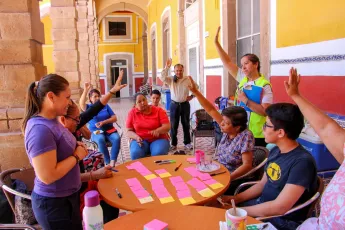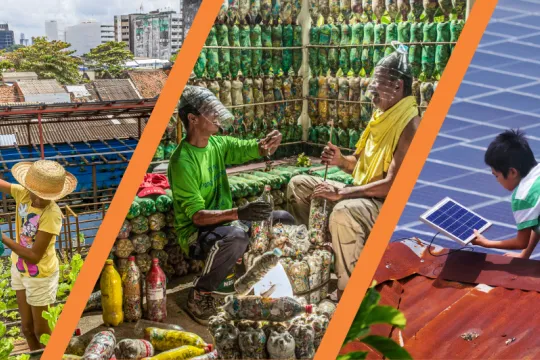
Residents of León come together to co-design an urban garden and foster inclusivity and sustainability in their communities. © TUC / Jose Francisco Flores Carreño
In a world full of inspiring iniatives to help cities become more sustainable, inclusive and low-carbon, a global call to capture these endeavours through the lens of a camera resulted in a total of amazing 534 photographs and descriptions from 51 countries. Contributors were asked to showcase their communities learning and working together to make cities more sustainable and liveable. Spanning five regions of the world, the images tell a compelling story of the delicate balance between urban areas and the natural world, in which grey meets green and blue. Understanding the importance of this is an invitation to all of us, including the youngest generations to learn and engage in how we can take care of our cities and transform them into liveable, sustainable places. The descriptions of the images highlight the power of collective action and show the constructive impact individuals can have to shape their communities and the environment and create positive change.
Activities taking place to create sustainable urban environments
Specific activities are taking place in the world’s regions to foster the development of urban areas that prioritize sustainability. From promoting sustainable cooking to creating bicycle-friendly cities, advocating for healthcare improvements and supporting local agricultural productions and small businesses, initiatives reflect many ways to reshape our cities. Among the activities mentioned most on the road to building more sustainable cities, several themes consistently became apparent.
Tree planting for the restoration of lake areas and green spaces, as well as mangrove planting in coastal ecosystems especially stood out. People valued the many benefits trees provide towards protecting shorelines from storms, reducing urban heat and providing essential life forces such as oxygen and clean air. Teaching the younger generations how to preserve natural environments also was a recurring theme, as was the importance of learning sustainable agricultural practices to secure food provision. Additionally, efforts towards cleaning and waste removal, thereby improving public spaces and rivers were often depicted. Initiatives focusing on reusing and recycling included the collection of recyclable materials. They encourage self-sufficiency and innovation to reuse. This goes beyond geographical boundaries, as communities everywhere in the world share the common purpose to create a better future for all.
Capacity-building for a changing world and achieving sustainability
The photographs reflect that education, active youth involvement and communities sharing traditional or technical knowledge are vital components in enhancing capacities in creating sustainable urban areas. Additionally, it is recognized that the engagement of both governments and civil organizations is essential in achieving sustainability goals. The submissions vividly portray how unity, solidarity, cooperation and shared responsibility, as well as collaboration and participatory decision-making in neighbourhoods and communities help achieve sustainability. The initiatives aimed at raising environmental awareness take centre stage, shedding light on the impacts of plastic pollution and empowering people to enhance waste management practices, both at the small-scale community level and in the larger urban landscape.
Overall, the pictures show the inspiring sense and agency communities have in city-building. They are developing skills through co-creation, collaboration, trust, perseverance and empathy, signifying a dedicated commitment to the ongoing process of constructing a more sustainable and socially just future.

